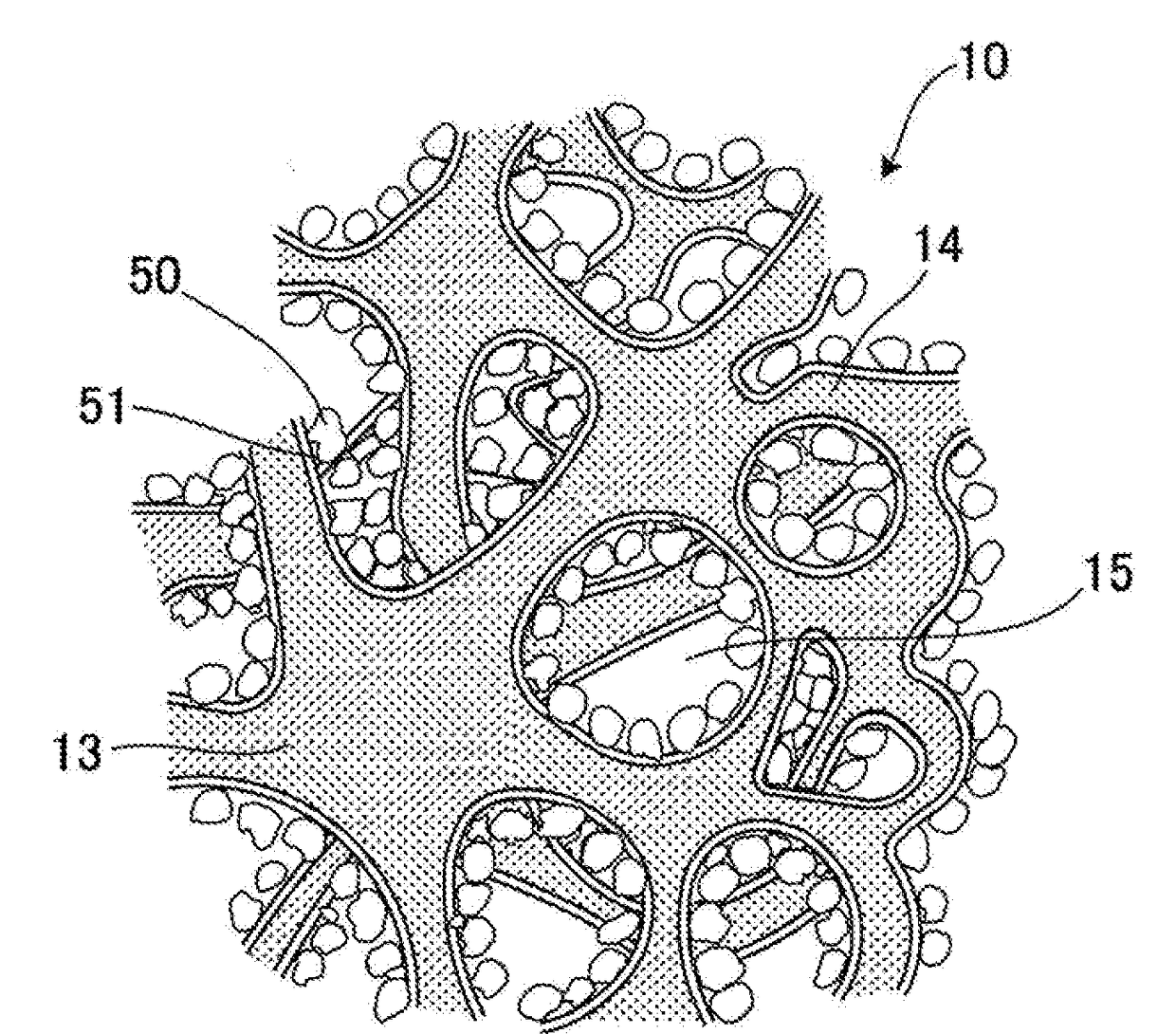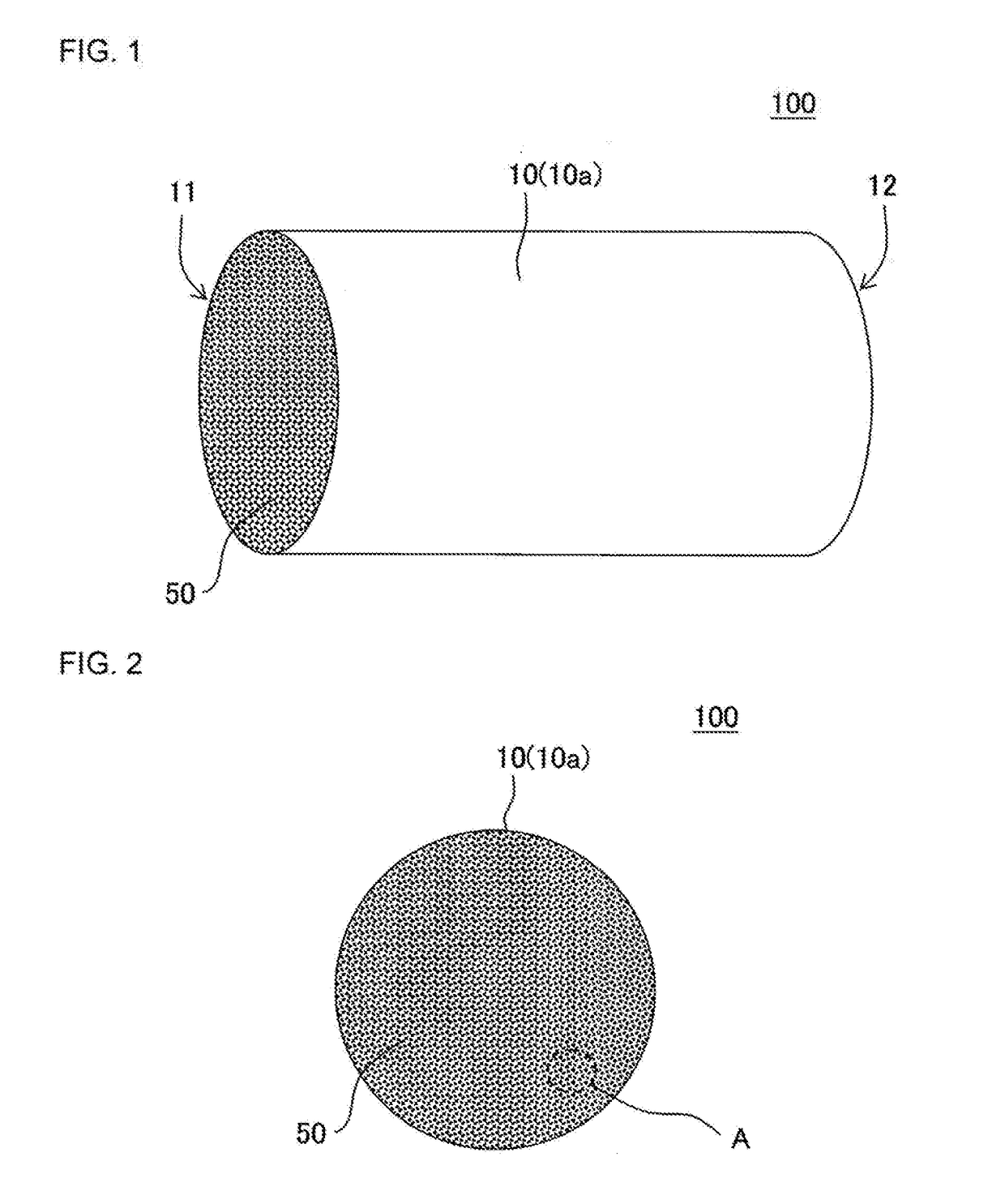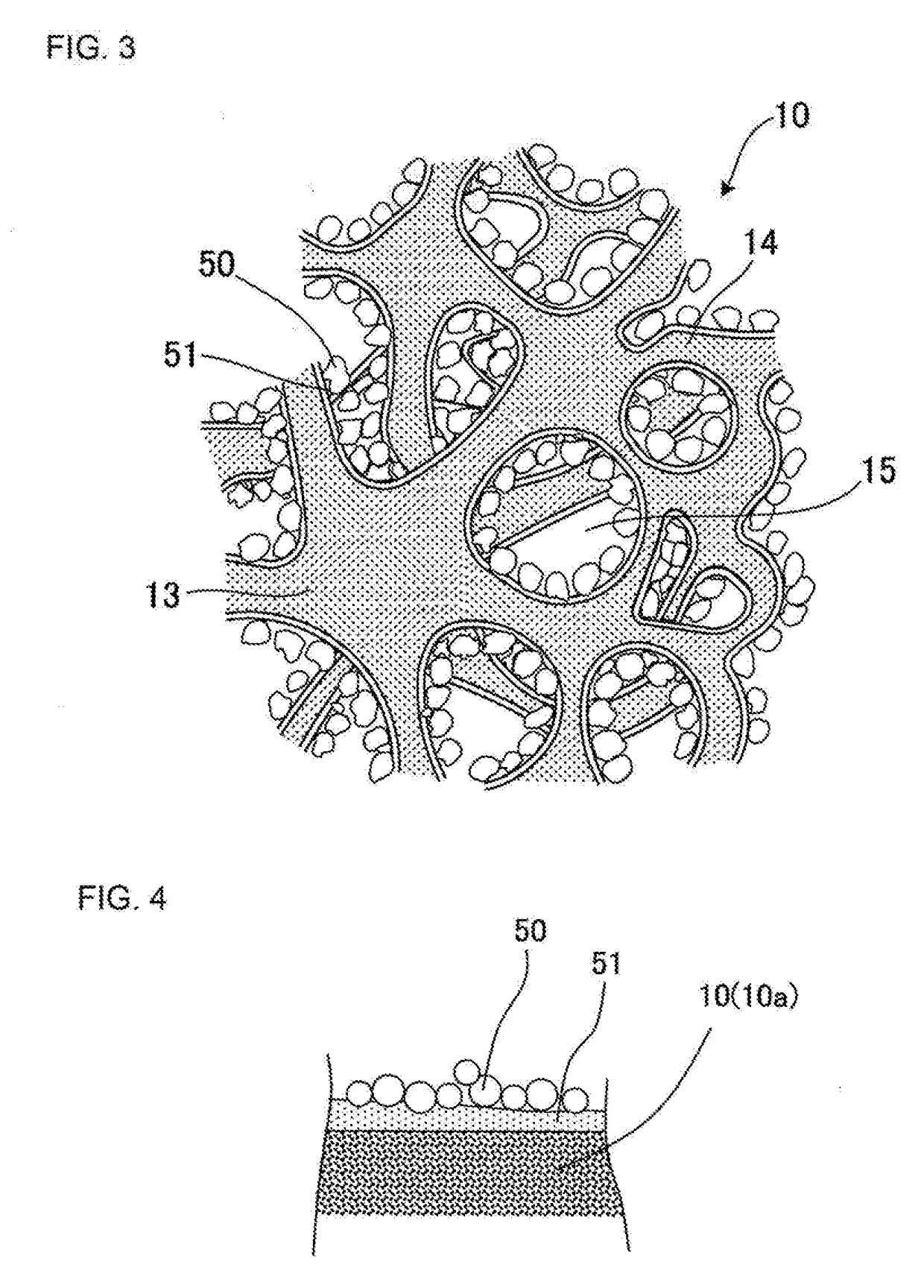Heat storage member
- Summary
- Abstract
- Description
- Claims
- Application Information
AI Technical Summary
Benefits of technology
Problems solved by technology
Method used
Image
Examples
example 1
[0118]First, SiC powder of 99.7 parts by mass and metal Si powder of 0.3 parts by mass were mixed to obtain a mixed powder. A binder, a pore former, and water were added to this mixed powder so as to prepare a kneaded material for molding. As the SiC powder, the powder having an average particle diameter of 100 μm was applied. As the Si powder, the powder having an average particle diameter of 10 μm was applied.
[0119]Next, the prepared kneaded material for molding was formed by extrusion so as to obtain a Si—SiC formed body including a void.
[0120]Next, the obtained Si—SiC formed body was fired at a temperature of 1440° C. for 5 hours so as to produce a porous Si—SiC substrate including the void. The obtained substrate had a round pillar shape having an axial length of 100 mm and including a first end face and a second end face each having a radius of 50 mm.
[0121]With regard to the obtained substrate, a “content ratio of SiC and content ratio of Si in the substrate” was measured by t...
examples 2 to 10
[0134]Each heat storage member was produced in the same manner as in Example 1 except that a coating layer was formed by changing composition of raw material powder for the coating layer. Composition and a softening point of each coating layer in Examples 2 to 10 were found to be those shown in Table 2. Evaluation results regarding the produced heat storage member are shown in Table 1.
examples 11 to 14
[0135]Each heat storage member was produced in the same manner as in Example 1 except that a coating layer was formed so as to include protrusions having a difference between recesses and protrusions of 0.5 to 100 μm. Each coating layer in Examples 11 to 14 was a layer including at least one of SiC particles, metal Si particles, Si—SiC particles, and C particles in the glass coating layer. Those heat storage members including particulates in their coating layer such as the heat storage members in Examples 11 to 14 are shown as “presence” in a column of “presence or absence of particulates” in Table 3. On the other hand, those heat storage members including no particulates in their coating layer such as the heat storage member in Example 1 are shown as “absence” in a column of “presence or absence of particulates” in Table 1. An average particle diameter of the particulates dispersed in the coating layer was measured by observing compositional images by using an energy dispersive X-r...
PUM
 Login to View More
Login to View More Abstract
Description
Claims
Application Information
 Login to View More
Login to View More - R&D
- Intellectual Property
- Life Sciences
- Materials
- Tech Scout
- Unparalleled Data Quality
- Higher Quality Content
- 60% Fewer Hallucinations
Browse by: Latest US Patents, China's latest patents, Technical Efficacy Thesaurus, Application Domain, Technology Topic, Popular Technical Reports.
© 2025 PatSnap. All rights reserved.Legal|Privacy policy|Modern Slavery Act Transparency Statement|Sitemap|About US| Contact US: help@patsnap.com



